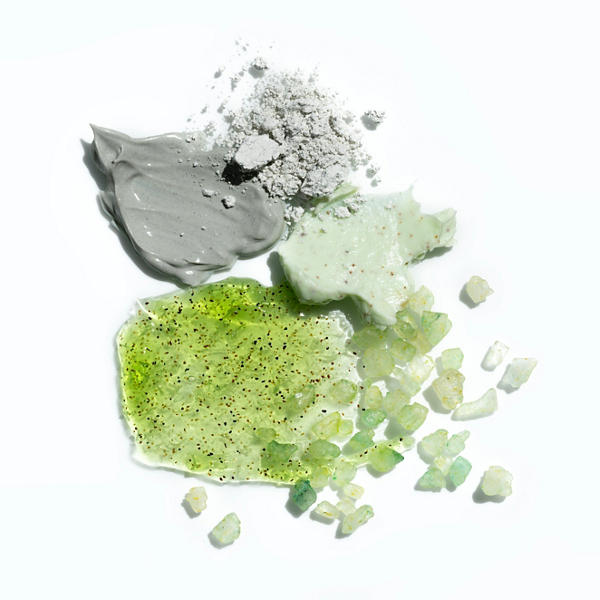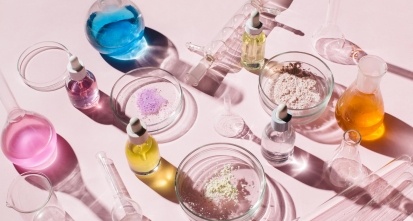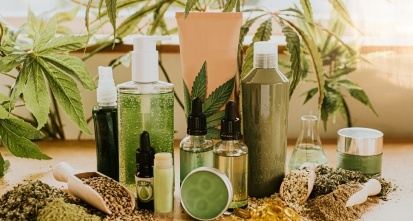Gain new perspectives for faster progress directly to your inbox.
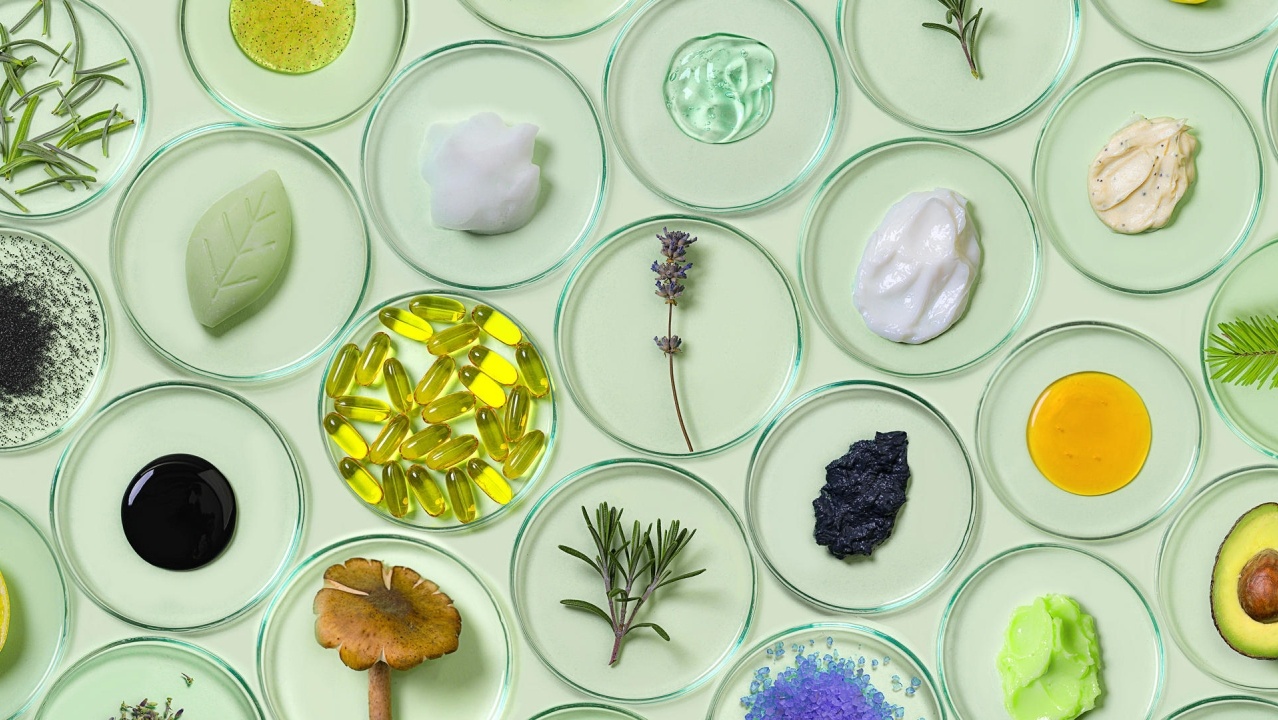
The cosmetics industry is at a critical crossroads with environmental stewardship and sustainability. The quest for sustainable practices and natural ingredients for cosmetics is more urgent than ever, driven by the growing awareness of the environmental, social, and economic impacts of product life cycles. This has placed an imperative on companies to adopt eco-friendly ingredients, cutting-edge preservation techniques, and innovative formulations that meet consumer expectations and adhere to regulatory standards.
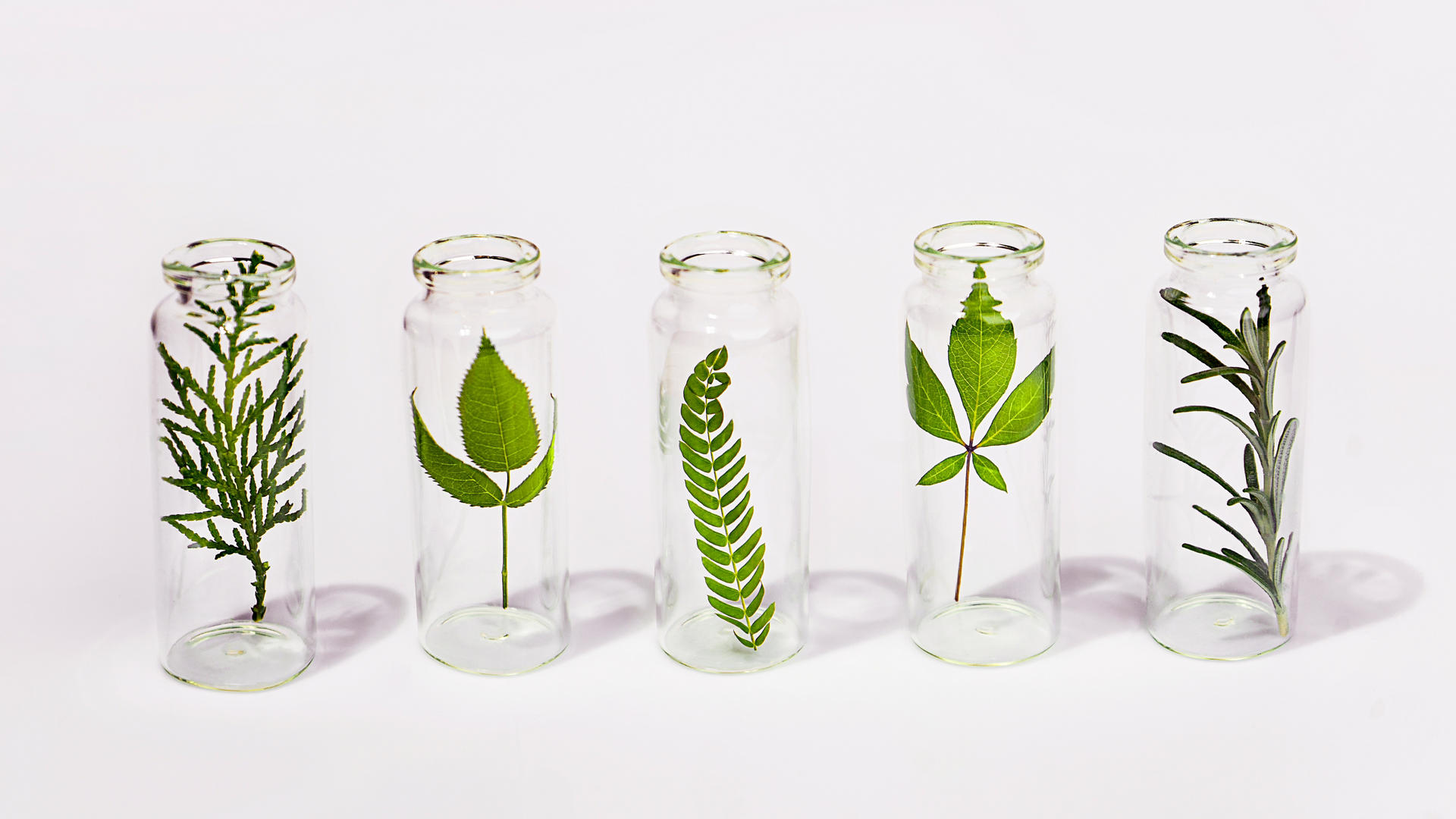
Sustainability as strategy: Natural ingredients for cosmetics driving growth
The shift toward sustainability in the cosmetics industry is illustrated by the burgeoning market for natural ingredients, projected to expand from USD $642 million in 2022 to USD $1,095 million by 2030. This trend reflects a significant change in consumer behavior, with over 40% of shoppers prioritizing natural components in their beauty and personal care products. The demand for environmentally sustainable, safe cosmetics is reshaping how products are formulated, driving an increase in research dedicated to natural ingredients for cosmetics. Supporting this observation, data from the CAS Content Collection™ highlights a significant growth in journal and patent publications related to natural cosmetics over the last decade.
The ingredients challenge: Selecting sustainable raw materials
A typical cosmetic product is comprised of 15 to 50 ingredients.
Emollients, surfactants, preservatives, solvents, and colorants are just a few of the different classes of ingredients where conventional options are a source of several ecological, human health, and societal concerns, such as:
- Petrochemical origin
- Animal exploitation or deforestation
- Use of heavy metals catalysts
- Decreased production for food industry
- Environmental pollution
- Non-biodegradable or bioaccumulative materials
- Residual 1,4-dioxane and ethylene oxide
The industry faces the challenge of substituting synthetic ingredients with environmentally and socially friendly alternatives without compromising product efficacy, safety, or shelf life.
Fortunately, advancements in green chemistry and biotechnology offer promising solutions, such as replacing petrochemical-derived emollients like petrolatum with vegetable oils or squalanes from sustainable sources. Additionally, innovations in biocatalytic processes, microbial cell factories, and solvent-free extraction methods enable the sustainable production of natural ingredients (e.g., esters and fatty alcohols) and the isolation of challenging-to-source materials.
The challenge lies not just in identifying and substituting sustainable alternatives but in understanding how these substitutions affect the full product value chain and contribute toward sustainability initiatives at the company and industry levels.
Substituting ingredients such as petrolatum, dimethicone, and phenoxyethanol with sustainable counterparts can significantly influence the supply chain of raw materials, ingredient interactions, cosmetic formulations, and the quality of the final product. This highlights the need for reliable access to scientific and industry data that can help build a strategic approach to sustainability.

Natural emollients are leading the market
Natural emollients account for the largest share in value and volume for the natural cosmetics ingredient market, with the skin care segment holding the largest revenue share (38.7%).
There is a significant move away from traditional, petrochemical-derived ingredients toward solutions prioritizing environmental responsibility without compromising product efficacy. In 2021, the esters segment dominated the market and fatty acids are expected to attain a CAGR of 5.5% between 2022 and 2030.
The industry's adoption of vegetable oils, microbial fermentation products, and bio-catalytic processes exemplifies this commitment, offering many benefits, from enhanced hydration capabilities to reduced environmental impact. Here are some notable advancements in this category:
- Hydrocarbon-based emollients: Known for their occlusive properties and hydration capability, with vegetable oils emerging as eco-friendly alternatives.
- Squalane: Favored for its stability, derived from vegetable sources or microbial fermentation.
- Fatty alcohols: Such as cetyl alcohol from sustainable sources, showcase a move toward ingredients from sustainable agriculture or bio-engineered sources.
- Esters: Transitioning to biocatalytic processes to reduce environmental impact, with products like Evonik's Tegosoft OER leading the way.
With natural emollients setting the stage for more sustainable cosmetics, the next step is to examine the role of natural preservatives in maintaining the efficacy and longevity of these products, spotlighting the holistic approach to natural ingredients for cosmetics.
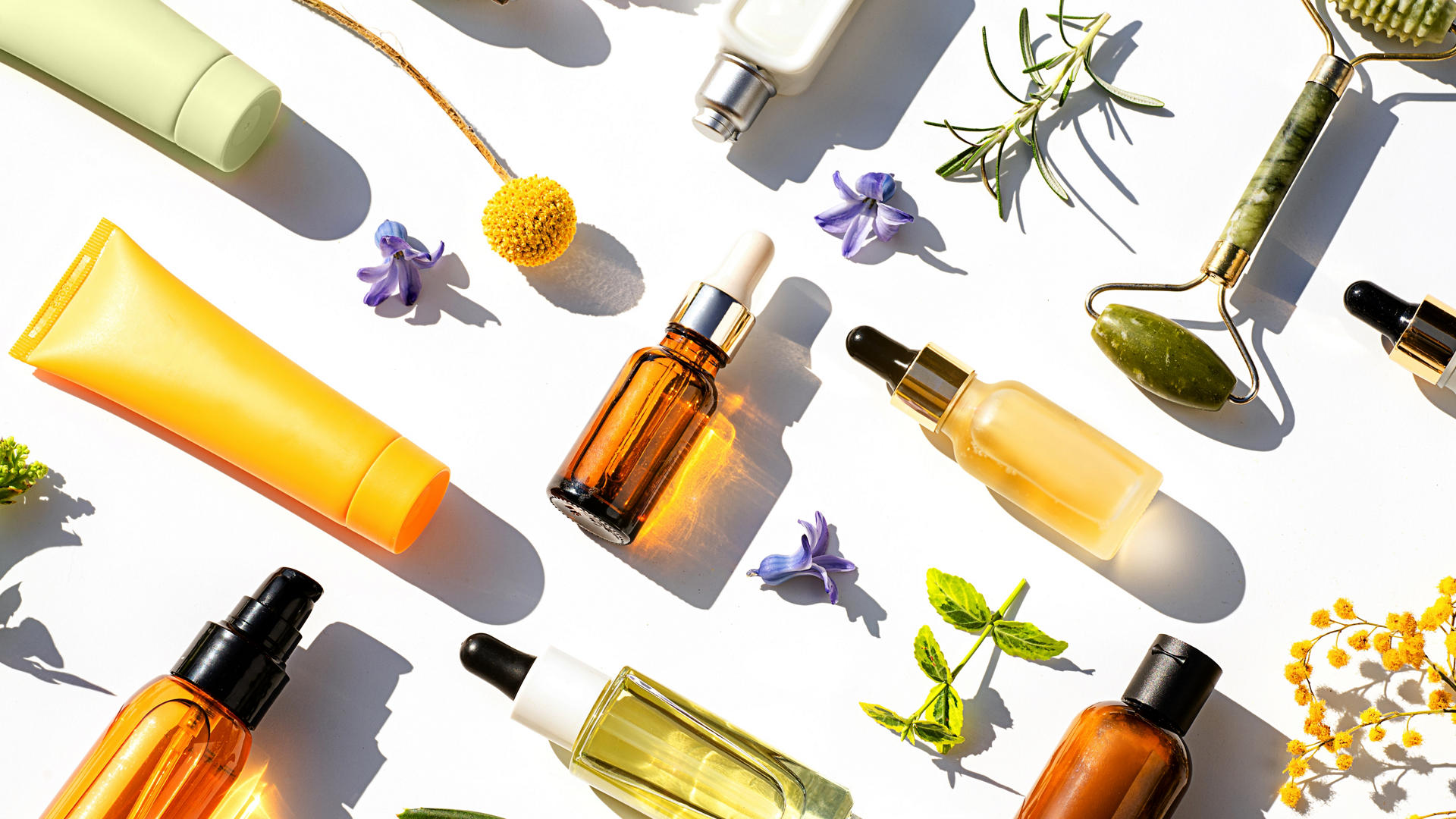
Natural solutions for enhanced safety and lifetime value
The role of preservatives in cosmetics extends beyond shelf life; it's pivotal in maintaining product safety and efficacy post-opening. Traditionally, the industry has relied on synthetic preservatives like paraben esters, formaldehyde donors, and phenol derivatives. However, these compounds have raised health concerns, including endocrine disruption and potential carcinogenic effects, prompting regulatory actions and a reevaluation of preservative systems.
The cosmetics industry is seeking safer alternatives to conventional preservatives, driven by both regulatory pressures and consumer demand for more natural products. This pursuit involves a multifaceted approach:
- Nature-identical synthetic preservatives: Compounds like benzoic acid/sodium benzoate and sorbic acid/sodium sorbate offer safer, more acceptable alternatives while maintaining efficacy.
- Natural preservatives: Plant extracts and essential oils are at the forefront of this shift. Their antimicrobial properties provide effective preservation. Notable examples include extracts from tea, cinnamon, and thyme, which preserve and contribute to the product's sensory attributes.
- Multifunctional Ingredients: Multifunctional compounds that serve a primary function but also offer antimicrobial properties are increasingly used. This includes certain emollients and surfactants, which add to the product's preservative system while fulfilling their main roles.
In alignment with this industry shift, data from the CAS Content Collection™ highlights a steady increase in journal and patent publications related to natural preservatives over the last two decades.
Embracing natural ingredients for emollients and preservatives represents a significant step forward in sustainable cosmetics. However, the journey is not without its challenges, as formulators grapple with solubility and stability issues. These challenges, while daunting, pave the way for innovative solutions.

NaDES: Enabling breakthrough formulations
Enter Natural Deep Eutectic Solvents (NaDES): a breakthrough innovation designed to overcome the inherent solubility and stability challenges of natural ingredient formulations. By enabling the stable incorporation of sensitive bioactive compounds, NaDES extend the shelf life of natural cosmetics and, due to their biodegradability and biocompatibility, are becoming a key player in the industry's green transformation.
The versatility of NaDES extends beyond their basic properties, showcasing their potential in several applications:
- Extraction: NaDES efficiently extract phenolic compounds, such as from Carthamus tinctorius L., with recovery yields up to 97%, enhancing natural ingredient bioavailability.
- Chromatography: NaDES are used in HPTLC for selective extraction from herbs like Ginkgo biloba and Panax ginseng, avoiding toxic by-products like ginkgolic acids for safer formulations.
- Innovative applications: Their stabilizing capacity enables the use of previously volatile or delicate ingredients, broadening the range of natural compounds in cosmetic formulations and enhancing product diversity and efficacy.
NaDES illuminates the path forward for harnessing natural ingredients in cosmetics, ensuring both eco-responsibility and high performance. Data from the CAS Content Collection™ highlights significant growth in journal and patent publications related to NaDES over the last decade.

Market players steering the cosmetics industry toward sustainable excellence
The cosmetics industry is witnessing significant strides toward sustainability, catalyzed by global leaders such as BASF, Dow, and L'Oréal. L'Oréal's ambitious "L’Oréal For The Future" commitments encompass a holistic approach, targeting a 50% reduction in greenhouse gasses per product by 2030, and championing biodiversity and circular economy principles.
Similarly, Garnier's Green Beauty Initiative sets robust targets for sustainable sourcing, water conservation, and waste reduction, aiming for 100% renewable energy and zero plastic pollution by 2025. These initiatives exemplify the industry's shift toward sustainable practices and highlight the role of market leaders in driving ecological sustainability.
|
Key players |
Recent activity and highlights |
|
BASF SE |
BASF SE partnered with BEAUTYSTREAMS to expand its D’lite digital service for personal care. Verdessence line: Verdessence RiceTouch ingredient
|
|
Dow Inc |
Expands sustainable portfolio with three new product launches spanning skin care, hair care, sun care, and color cosmetics with diverse ingredients:
|
|
Solvay |
Launches Naternal, its new brand of bio-based biodegradable polymers for hair and skin care solutions. |
|
Evonik Industries AG |
Manufactures first product from world’s first industrial-scale rhamnolipid biosurfactant plant, meeting high demands for bio-based, biodegradable rhamnolipids |
|
Clariant AG |
|
|
Ashland Global Holdings Inc |
Launched The Natural Line for personal care products with standout ingredients: hyalurotech sodium hyaluronate. Introduces Gantrez soja under the new transformed vegetable oils technology platform, specially formulated for toothpaste and mouthwash applications |
|
Croda International PLC |
Completes the acquisition of Solus Biotech, a global leader in biotechnology-derived active ingredients for beauty care and pharmaceuticals. |
|
Syensqo |
Invested USD $2.1 million in Bioeutectics — a provider of natural and high-performance solvents for cosmetics, and other industries. |
|
Cosmo International Fragances |
|
The path forward in cosmetics eco-innovation
As the cosmetics industry navigates the complexities of sustainability, the path forward is paved with innovation and responsibility. From the rise of natural ingredients for cosmetics and the challenge of replacing conventional components without compromising quality to the pioneering use of natural emollients and the shift towards safer preservative systems, the sector demonstrates a robust commitment to eco-wise practices.
The adoption of NaDES and the leadership of market giants in embracing and promoting green initiatives underscore a collective move toward more sustainable, health-conscious, and environmentally responsible cosmetics. This journey, while challenging, is essential for cosmetic companies to establish a competitive market advantage.
By continuing to innovate, collaborate, and push the boundaries of green chemistry and eco-design, the cosmetics industry can meet consumer demands and maintain its vital role in promoting beauty, health, and sustainability.
Explore natural cosmetic materials with CAS Formulus® and inspire more innovative product formulations.


